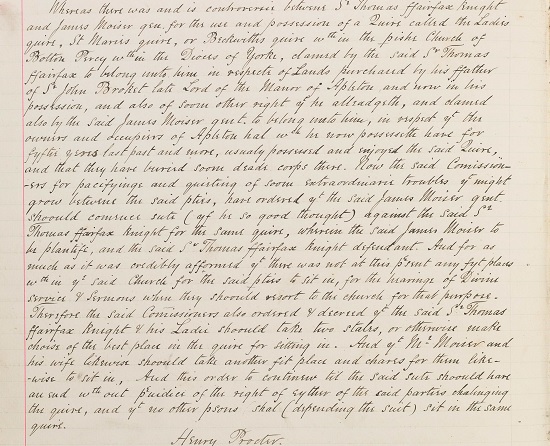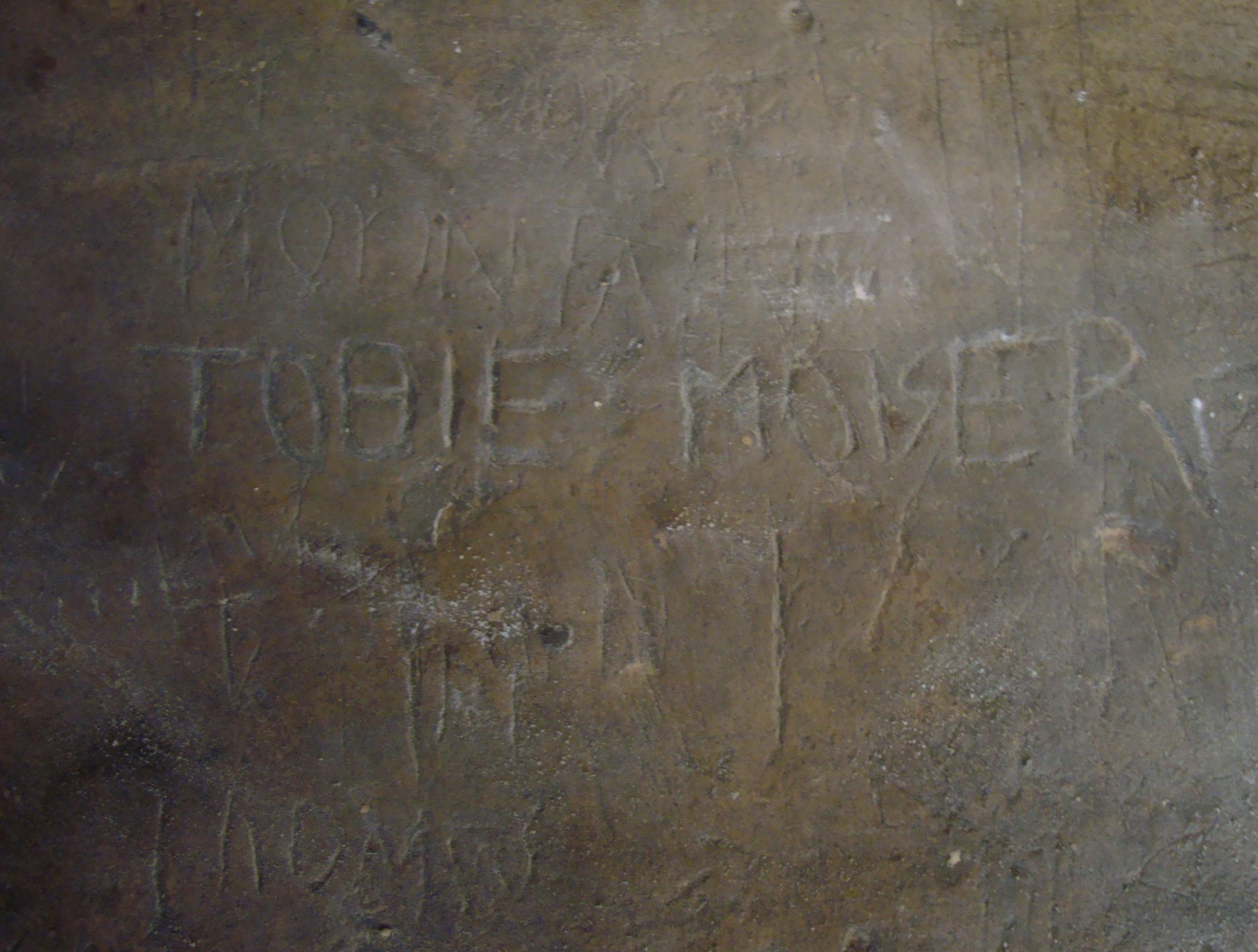The Great Pew Dispute of 1597
In July 1597 an argument began in church over the “Brocket Quire” which had been made into private seating for the gentry of Appleton after the Reformation. Seated there that morning was Sir Thomas Fairfax and family and also James Moiser and family. After morning service, Sir Thomas Fairfax (later to become Lord Fairfax) made a great stir by leaving his seat and from the chancel steps raised a public protest to the Rector and Churchwardens against the intrusion of the Moisers into what he declared to be private seating. The matter was discussed and it was decided that the area was big enough to be divided into two, Sir Thomas having the first choice of seats.
The following Sunday when the Moisers arrived in church they found the pews taken up by Fairfax’s people. In protest Mr Moiser stood outside the pew for the full two hour service but, despite being elderly, was not prepared to undergo loss of status and dignity by sitting elsewhere. The dispute became so acute that a royal commission, presided over by the Archbishop, sat to discuss it for the Moisers, although “meane and rusticall persons”, were evidently people of substance and character. The Archbishop found in favour of the Moisers and said they should be allowed to sit in their accustomed place but the following Sunday they were again kept out by Fairfax’s men.

An extract from Parish Registers
On the way home after morning service the Moisers were threatened by these men and that evening on the return to church for evening service a fight broke out. Francis Moiser and his Uncle Thomas were attacked by a group of Fairfax’s men said to include Sir Thomas. Subsequently James Moiser prosecuted Sir Thomas for breach of the peace. However no evidence has survived to say what happened next. The only legacy that has survived in church is the graffiti written by the hand of James Moiser’s son Tobie.
On the polished seat slab of the sedillia, and upon the pillars of the south aisle (and elsewhere) the name of Tobie Moiser and the initials TM can be readily observed. On one pillar ‘Tobie Moiser’ is cut at a boys level and on the next it is several inches higher as though the “rusticall” youth had grown and carved his name once again some years later.

Tobie Moiser carving